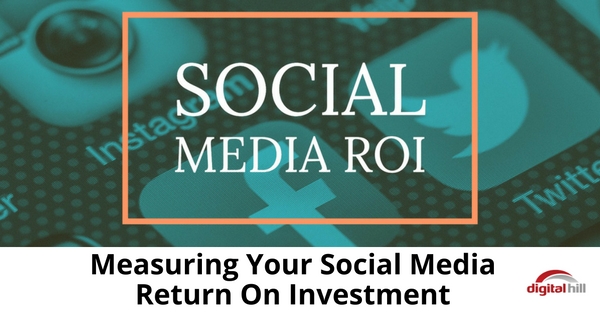Measuring Your Social Media Return On Investment

As with all marketing, it’s important to know how your Social Media Campaigns are performing to get the best possible ROI.
The following checklist will help you get setup to calculate your Social Media Return on Investment (ROI)
Audience
Knowing your target audience is always the first place to start when planning any marketing campaign. Look at previous customers and determine as much demographic information as possible. Target your ads accordingly.
Digital marketing allows you to target specific demographics. You should not be doing a scatter-shot approach. Your leads from ads help you know if this is working or if you need to adjust your ad marketing focus.
Lead Value
The value of a lead will vary by industry, company, etc. You have to decide what a lead is worth to you. Also take into account the value of likes, comments, shares, etc. If you spend $100 on Facebook Ads but know that if you get one paying customer from that the value was $1000, then that’s a legitimate value of $900 for that ad spend.
Customer Value
Each customer is more valuable than just 1 sale. How long does an average customer purchase from you? How much do they spend over time? How many times do they buy from you? Take all this into account when calculating the lifetime value of a customer. The cost of acquiring might be $100 but if the lifetime value is $3,000, then that’s a good investment when the
The cost of acquiring might be $100 but if the lifetime value is $3,000, then that’s a good investment when the long term view is taken into account.
Cost of Customer
How much does it cost you to obtain each customer? Breakdown what you spend on Social Media management. This includes staff time to post, schedule, respond, and monitor. Don’t forget to include tools, programs, and apps you need for this as well. It all goes into your monthly cost of operations and then needs to be measured against leads that come in from social media and convert to become new customers.
Follow-up
What happens to a lead generated on Social Media? Do you direct them to your website? Are they placed in the sales funnel and fed a drip campaign? You must know what happens to each lead and how, when, and why they convert to a customer. Keeping track of this is important.
You will want to measure traffic from social media to your website. You can even use lead conversion ads on Facebook to help you measure specific ads or posts that converted to completing the lead form on your website. That gives you specific ROI measurements.
Customer Retention
You must also know your customer turnover rate. Do your customers opt-out of emails, sign up for services but then cancel, or buy from you more than once? Compare your regular customer base with customers found via Social Media. If the retention of Social Media customers is lower, then change who you’re targeting.
Social Media Marketing Budget Example
Total Marketing Budget: $200,000
Social Media Budget: $20,000
Lifetime Value of Customer: $2,000
Cost of Acquiring Customer: $200
Number of New Customers Needed for Positive ROI on overall budget: 112 plus
Social Media Marketing is a long-term, ongoing process. If done correctly it not only generate leads but it also positions you in your marketplace as a trusted authority. It also acts as a customer service platform, public relations machine, and real-time FAQ. All this should be taken into account when measuring your social media return on investment.
